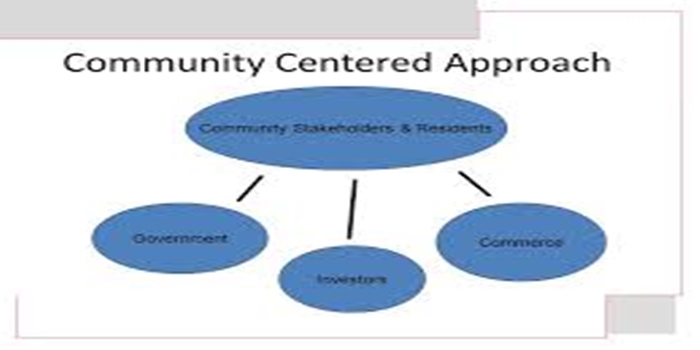In this blog, we explained the meaning of community-centered approach, the elements, the examples, we also outlined their benefits.
Definition
A “community-centered” approach means placing the community at the heart of decision-making, planning, and implementation of initiatives. It emphasizes the active involvement and empowerment of community members in addressing their own needs and creating solutions.
The key Elements of Community Centered Approach:
Community Empowerment:
Actively involving community members in decision-making processes, providing them with the skills and resources to address their own needs, and promoting their self-determination.
Collaboration and Partnerships:
Fostering strong relationships between community organizations, government agencies, and other stakeholders to achieve shared goals.
Social Cohesion:
Creating a sense of belonging and shared responsibility within the community by promoting positive interactions and addressing social divisions.
Multi-Level Dialogue:
Facilitating communication and collaboration between different levels of government, community organizations, and individuals to develop and implement effective policies and programs.
Asset-Based Approach:
Recognizing and leveraging the existing strengths, skills, and resources within the community, rather than focusing solely on deficits or needs.
Community-Based Settings:
Promoting health and well-being within the community setting, rather than relying solely on traditional service settings.
Equity and Social Justice:
Addressing inequalities and working towards a more just and equitable society by ensuring that all community members have access to opportunities and resources.
Participatory Methods:
Using participatory methods to involve community members in the design, delivery, and evaluation of interventions.
Continuous Evaluation and Learning:
Regularly monitoring and evaluating the impact of interventions and using the findings to improve the effectiveness of the approach.
A Community-Centered Approach offers numerous Benefits, including:
Increased Community Ownership and Empowerment:
Community-led development empowers individuals to participate in and feel ownership of their own development, fostering a sense of pride and motivation.
Improved Health Outcomes:
By addressing health disparities and promoting wellness, community-centered approaches can lead to reductions in chronic diseases, improved mental health, and overall better health outcomes for the population.
Enhanced Social Capital:
Community engagement strengthens social connections and networks, building resilience, improving mental health, and encouraging health-seeking behaviors.
Greater Sustainability:
Community-based programs that are designed and implemented with local needs and assets in mind are more likely to be sustainable in the long term, as they are rooted in the community’s values and resources.
More Effective and Relevant Programs:
By involving community members in the design process, programs are more likely to be relevant to their needs and experiences, leading to better outcomes.
Improved Communication and Trust:
Community-centered approaches foster open communication and build trust between individuals, organizations, and service providers.
Increased Capacity and Resources:
Community-centered approaches can strengthen the capacity of local organizations and build a more robust network of resources to support the community.
Reduced Inequalities:
By addressing barriers to engagement and ensuring equitable access to resources, community-centered approaches can help reduce health inequalities and promote social justice.
Personalized Care:
Community-based services can provide personalized care that takes into account individual needs and preferences, leading to better outcomes and increased satisfaction.
Long-term Impact:
Community-centered approaches aim for a lasting impact, uplifting individuals, families, and entire communities.
Here are more Specific Examples:
Community-Based Learning (CBL):
Students engage in volunteer work at local food banks or homeless shelters.
Students organize community events or projects to address local issues.
Students conduct research projects on local challenges and propose solutions.
Community-Based Activities:
Organizing street theater performances or puppet shows to raise awareness about local issues.
Hosting concerts, art contests, or dance competitions to foster community engagement.
Utilizing mobile video units to share information and promote community dialogue.
Conducting community surveys or forums to gather feedback and address local needs.
Community Buildings:
Utilizing village halls, town halls, churches, mosques, synagogues, or cathedrals as community gathering spaces.
Using these buildings for community events, meetings, or activities.
Ensuring these buildings are accessible and inclusive for all members of the community.
Community-Centered Projects:
Developing community gardens to promote sustainable food production and local food security.
Initiating community clean-up campaigns to improve the environment.
Establishing community libraries or reading programs to promote literacy and learning.
Conclusion
Community-centered approaches focus on involving the local community in various activities and initiatives. Examples include using community buildings like village halls or town halls, organizing community-based learning programs where students engage with local issues, and implementing community-based events like street theater or puppet shows. These approaches aim to strengthen community ties and address local needs through collaborative efforts.


